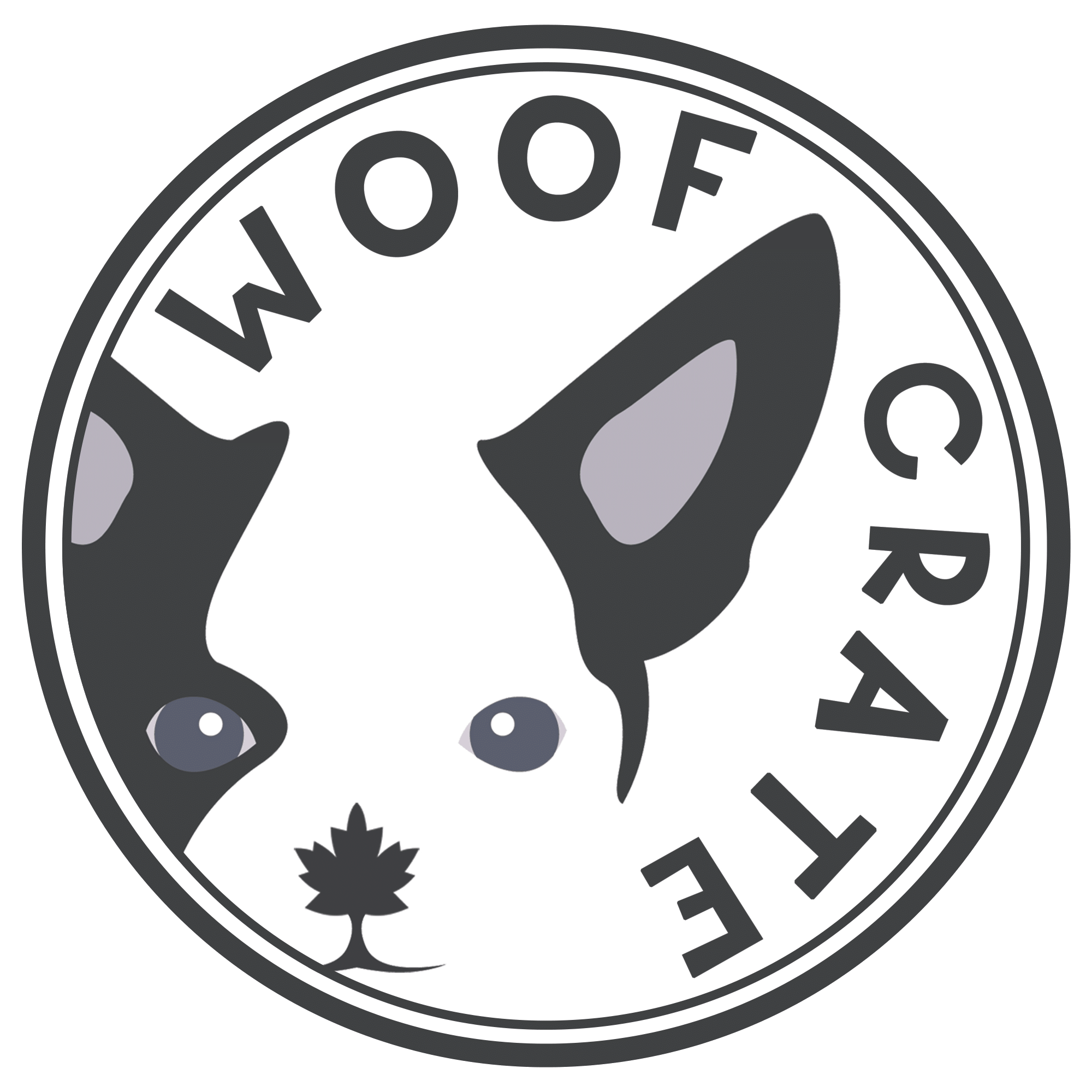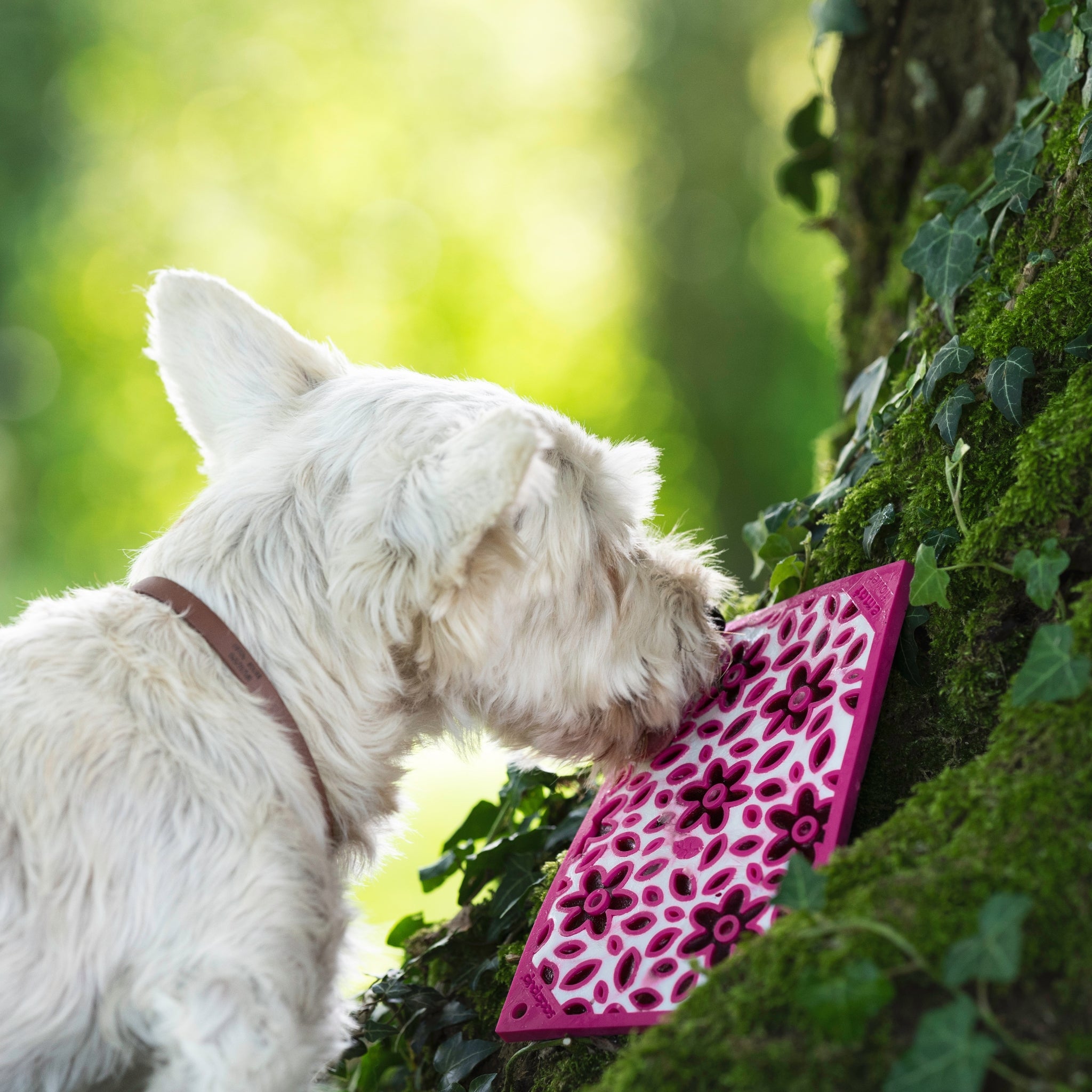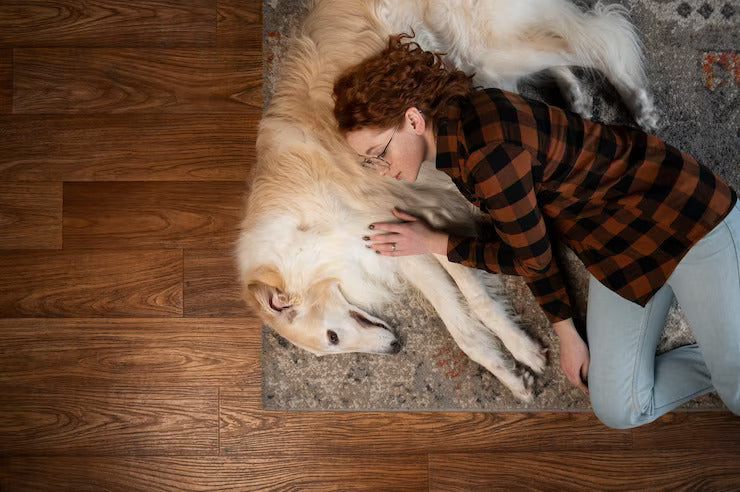Understanding Sleep in Dogs
Ah, to sleep – perchance to dream! Even for our furry friends, sleep is a vital part of their health and well-being. But before we can talk about canine dreams, we need to understand how dogs snooze.
Just like us, dogs go through different stages of sleep – light sleep, deep sleep, and the one we're all ears for – REM (Rapid Eye Movement) sleep. This REM stage, named for the quick darting of the eyes under the eyelids, is when dreams occur in humans. And guess what? It happens for dogs too!
But hang on to your leashes because here's where it gets interesting: dogs sleep a lot more than we do, clocking up to 14 hours a day! However, their REM stage is a lot shorter, meaning their dreams could be more frequent, but quicker than ours. It's like their dreams are on fast-forward! Just imagine, your dog might be having speedy adventures in their sleep while you're slowly sipping your morning coffee. Isn't that a howl to think about?
- Sleep Duration: While we humans typically need around 7-9 hours of sleep, dogs often catch Z's for about 12-14 hours a day. They're true masters of the nap game!
- REM Stage: REM is the stage of sleep where dreaming occurs. In humans, this stage usually makes up about 25% of our sleep, and we generally start dreaming about 90 minutes into snooze-land. But for dogs, the REM stage is much shorter and happens more sporadically throughout their longer sleep cycles.
- Dream Frequency: Due to their shorter REM stage, dogs might have dreams more frequently but in shorter bursts than humans. It's like their dreams are short stories, while ours could be full-length novels!
- Sleep Positions: Dogs have a variety of sleep positions – curled up, on their side, sprawled on their stomach, or the hilarious, paws-in-the-air position. Each one has its own meaning about your pup's comfort level, temperature, and vulnerability.
- Daytime Sleep: Dogs are flexible sleepers. Unlike humans who typically sleep at night, dogs can easily adjust their sleep pattern and often catch several naps during the day.
Now, let's venture into the part you've been eagerly waiting for. Brace yourself; we're entering the dream zone!
Do Dogs Dream? The Science Behind Snoozing Snouts
Can our canine companions dream? In a word, yes! But don't take it from us, let's look at what the science says.
Dr. Matthew Wilson, a professor of neuroscience at MIT, and his graduate student, Kenway Louie, performed an intriguing study on rats. They tracked the brain activity of rats while they were awake and running a maze, then later when they were asleep. The astonishing finding was that the patterns of neurons that fired while the rats were sleeping were almost a perfect replay of the patterns when they were running the maze. This research gave us substantial evidence that not only do animals dream, but they also dream about what happened to them during the day.
Similar studies on dogs sleep, with much less invasive techniques, of course, showed similar patterns in brain activity, suggesting that dogs also replay their day during sleep.
But, we should remember that no dog has ever woken up and told a scientist about their dream. So, while it's scientifically accurate to say dogs most likely dream, we can't say it with 100% certainty.
Dreaming among dogs, much like in humans, occurs during the REM (rapid eye movement) stage of sleep. You may notice your dog's eyes moving behind their closed lids, their legs twitching, or hear them making a soft woofing sound. These are all tell-tale signs of a dog deep in the land of dreams!
Remember, though, if you see your pup twitching or whining in their sleep, let sleeping dogs lie. Disturbing them could cause them to be disoriented or startled.
We've explored the science, but what exactly are dogs dreaming about when their tails wag in their sleep? Read on, as we dig deeper into the minds of our sleeping canines!

Doggy Dreamland: What Might Your Pooch Be Picturing?
It's charming to imagine that our dogs might be chasing squirrels or reliving their favorite walks in their dreams. So, what are dogs dreaming about? The short answer is, we can't be absolutely sure. Since dogs can't speak to us (at least not in human language), we can't definitively know the content of their dreams. However, we can make some educated guesses based on their behaviors and scientific research.
- Reliving the Day's Adventures: As we discussed earlier, research suggests that dogs, like rats, replay their experiences from the day in their dreams. So, your dog might very well be dreaming about that exciting game of fetch in the park, the curious squirrel they saw on their walk, or even the delicious new dog treat they sampled (perhaps one of WoofCrate's yummy options, for example).
- Showing Breed-Specific Behaviors: Researchers from the Clinical and Comparative Neuropsychology at the Central Institute of Mental Health in Mannheim, Germany, suggests that dogs may dream about activities related to their breed. For example, a Border Collie might dream about herding sheep, while a Labrador might dream about retrieving game.
- Exhibiting Dream Signs: You've probably noticed your dog twitching, running, or woofing in their sleep. These are signs they're likely dreaming. Fun fact: puppies and senior dogs are known to dream more frequently than adult dogs!
Remember, these are all educated guesses. Until dogs can talk and tell us about their dreams, we won't know for sure. But, isn't it fun to speculate what goes on in those doggy dreams? Up next, we'll share some signs to look out for to know if your furry friend is dreaming.
Reading the Signs: Is Your Dog Dreaming Right Now?
As your dog settles into a deep slumber, you might observe some twitching, tail wagging, or even hear a soft whimper. But are these signs of dreamland escapades, or just random movements? Let's look at some common signs your dog might be dreaming:
- Rapid Eye Movements (REM): Just like humans, dogs enter the REM sleep stage, where dreaming primarily occurs. If your dog's eyes are moving rapidly beneath their closed lids, they're probably in the REM stage and might be having a dream.
- Twitching and Moving: Dogs often twitch their paws, tail, or even their whole body during their sleep. They may look like they're running or chasing something, all while perfectly asleep. These movements are often a sign your dog is dreaming.
- Vocalizations: From soft whimpering to growling, or even barking, dogs can make various sounds while they're dreaming.
- Breathing Changes: You might notice changes in your dog's breathing pattern. It may become shallow or faster when they enter the dream stage of sleep.
Remember, these signs are just part of the normal sleep cycle and nothing to worry about. In fact, they can be quite endearing to watch! But it's important not to wake your dog while they're dreaming. Dogs, like humans, need uninterrupted sleep for good health. So let sleeping dogs lie, and enjoy these little insights into their dream world! Next up, we'll talk about a less pleasant aspect of dreaming – nightmares. Yes, dogs might have them too. Let's find out more.
Doggy Nightmares: When Dreamland Turns Scary
So we've established that dogs do dream, but what happens when those dreams turn into nightmares? While we can't ask our dogs directly, some signs might indicate they're having a less-than-pleasant dream:
- Restlessness: If your dog is consistently tossing and turning, it could be a sign they're having a bad dream.
- Whining or crying: A dog that whimpers, whines, or even howls during sleep might be dealing with a scary dream. It's hard for us to hear, but try to resist waking them up.
- Aggressive behavior: Growling, showing teeth, or other signs of aggression can sometimes suggest a dog is having a nightmare.
If your dog seems to be having frequent nightmares, it's worth mentioning to your vet. Stress or anxiety can affect a dog's sleep, just like it can in humans. Your vet can give you some tips to create a more calming sleep environment, and if necessary, explore any underlying issues that might be causing stress.
In the meantime, providing a comfortable and safe space for your dog to sleep can help ensure they have more sweet dreams than scary ones. Speaking of which, let's dive into our final section on how to enhance your dog's sleep health!
Enhancing Your Dog's Sleep Health
Everyone wants to ensure their four-legged friends have the best night's sleep possible, and luckily, there are several steps you can take to do just that!
- A Comfortable Sleeping Space: Make sure your dog has a comfortable and quiet space to sleep. A good-quality dog bed is a great investment for your dog's overall comfort and health. Ensure it's in a spot where they feel safe and can get away from the household hustle and bustle.
- Adequate Exercise: A tired dog is a sleepy dog! Regular physical activity ensures your dog will be tired when bedtime rolls around. Be sure to adapt the intensity and duration of exercise to your dog's age, breed, and health status.
- Proper Diet: Just like humans, dogs' diet can affect their sleep. Ensure they're eating a balanced diet that's suitable for their age, breed, and health status. A vet or a canine nutritionist can provide personalized advice.
- Regular Vet Check-ups: Regular check-ups can help ensure your dog is in good health. If your dog is having trouble sleeping, this could be an indication of health issues.
- Establish a Routine: Dogs are creatures of habit. They thrive on routine, including a regular sleep schedule. Try to keep consistent times for meals, walks, playtime, and bedtime.
- Sleeping position: Different dogs have different sleep positions. Huskies tend to sleep in a curled up position as they originate in colder climates while a Basset hound might sleep more splayed out!
Remember, every dog is unique, so what works for one dog might not work for another. It might take a little trial and error to figure out what your dog prefers. The important thing is to create a positive sleep environment so your furry friend can dream peacefully. After all, they might just be replaying their favorite moments from their day spent with you!
Unveiling the Secrets of Canine Dreamland
So, do dogs dream? According to science, yes, they do! Your pup's twitching, barking, and tail wagging while they're sleeping could all be signs of a doggy dream happening. It's fascinating to think that while your furry best friend snoozes beside you, they could be chasing balls, meeting new canine pals, or reliving their favorite moments with you in their dreams.
We've also learned that dogs' sleep cycles are quite different from ours, which explains why your dog might seem alert one minute and fast asleep the next. Dogs cycle through sleep stages much quicker than humans, and their dream-filled REM stage comes quite soon after they fall asleep.
But dreaming isn't just for humans and dogs. As we've learned, animals ranging from cats to rats and even birds have been found to dream, showing us that the ability to dream is more common in the animal kingdom than we once thought.
While we might not ever be able to get a live narration of what's happening in our dog's dreams, we can make sure they're getting the best sleep possible to support their dream adventures. With a good diet, regular exercise, a comfortable sleeping space, and a consistent routine, you can help make every nap a dream come true for your pup.
Keep wondering, stay curious, and the next time you see your dog snoozing, you might just wonder a little more about what's happening in their doggy dream world. And remember, while they're chasing squirrels in their dreams, they're always dreaming of being with you.
Do Dogs Dream Like Humans?
Yes, dogs do dream similarly to humans. They experience REM (Rapid Eye Movement) sleep, the stage associated with dreaming. Observations of twitching, paw movements, and even soft barking or whimpering during their sleep indicate that dogs are likely dreaming about their daily activities, such as playing or chasing.
How Much Sleep Do Dogs Need?
Dogs require a significant amount of sleep, usually about 12-14 hours a day, though this can vary by age, breed, and lifestyle. Puppies and older dogs may need even more sleep. Ensuring your dog gets enough rest is crucial for their overall health and wellbeing.
What Do Dogs Dream About?
While we can't know for sure, scientific studies suggest dogs likely dream about their daily experiences. This may include activities like playing fetch, exploring new smells during walks, or interactions with their human family and other pets. Breed-specific behaviors, such as a Border Collie dreaming about herding, are also possible.
Can Dogs Have Nightmares?
Just as dogs can have dreams, it's plausible they experience nightmares as well. Signs of a nightmare can include restlessness, whimpering, or even growling during sleep. It's essential to provide a safe, comforting sleep environment to help minimize stress and anxiety that could lead to bad dreams.
What Are The Signs That My Dog Is Dreaming?
Indications that your dog is dreaming include twitching, making running movements with their legs, vocalizing (like barking or whimpering), and rapid eye movements behind closed eyelids. These are normal behaviors and usually don't require any intervention.
How Can I Improve My Dog's Sleep Quality?
Enhancing your dog's sleep health involves several key steps: providing a comfortable and quiet sleeping area, ensuring they get plenty of exercises during the day, maintaining a consistent and healthy diet, regular veterinary check-ups, and establishing a stable routine. These steps help create a conducive environment for restful sleep and healthy dreaming.








Leave a comment
All comments are moderated before being published.
This site is protected by hCaptcha and the hCaptcha Privacy Policy and Terms of Service apply.